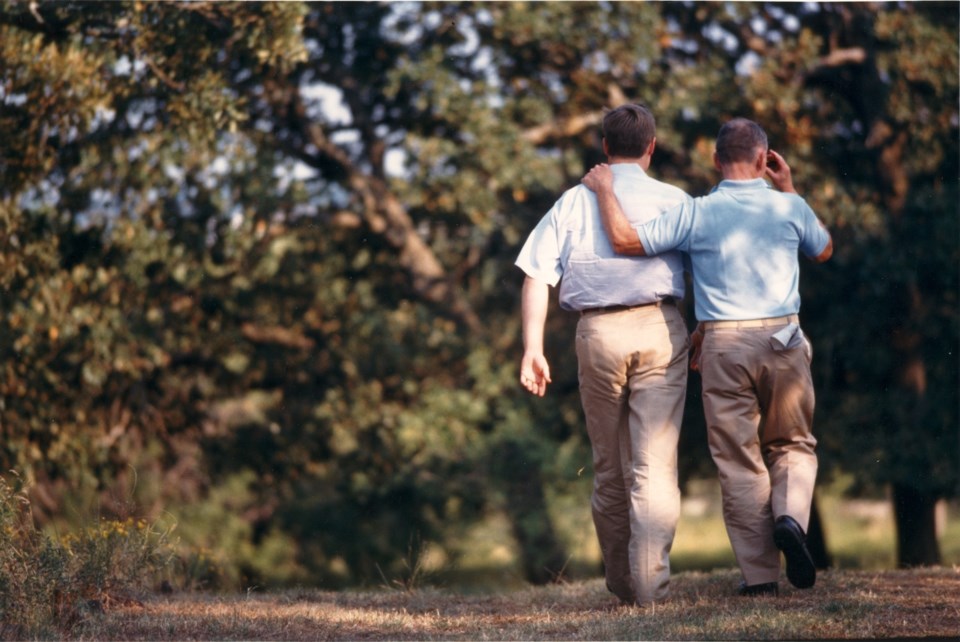On a Sunday afternoon in the early ’80s, self-made Texas billionaire Henry Ross Perot sat on horseback, staring at Collin County’s vast openness. The area, known for its agricultural heritage, resembled the prairie north of Fort Worth, which his son, H. Ross Perot Jr., would later transform into Alliance Airport. Perot Sr. would take his family horseback riding on the 2,700 acres he purchased in Collin County near what is now known as Dallas North Tollway. It was land where the buffalo once roamed and cowboys drove herds of cattle north to Shawnee Trail. Perot Sr. saw it as the future home for his company, Electronic Data Systems, and the surrounding farmland as the new center of Dallas.
Ross Perot had ridden out that day to share his vision for a corporate business park with his longtime friend and general counsel Tom Luce. He’d shown up at Luce’s house in his pickup, pulling a horse trailer, and told Luce they were going horseback riding. Perot had always been known as a gunslinger in the computer industry. He was a take-action person who was known to make deals and form business relationships on horseback. He’d been riding since he was a child breaking horses with his father. He’d taken the lessons he learned from his father on their trips to cattle auctions and formed EDS in the early ’60s, when computers were feared by the general public and business leaders.
A former IBM computer salesman, Ross Perot started EDS to design data-processing systems for corporate customers. Inspired by Henry David Thoreau’s quote, “The mass of men lead lives of quiet desperation,” Perot became a multi-millionaire in his late 30s and quickly known as “the world’s greatest computer salesman.” Ross Jr. called him the “Bill Gates of the ’60s.”
On horseback with Luce 15 years later, Ross Perot was not just a great computer salesman but a visionary who was about to become a real estate legend and kickstart two of the hottest areas for future development in North Texas.
“Ross always had a great plan,” Luce recalled. “He was buying the property and said he was going to move the center of Dallas north.”
Located immediately south of State Highway 121 and west of Preston Road, the 2,700 acres were perfect for his ground zero. Ross Perot told Luce that all they needed to do was get the infrastructure in place. A majority of EDS workers were already commuting from the northern suburbs to EDS headquarters in Dallas. Perot knew that if he built a larger location closer to the talent pool, it would only benefit his company. “At the same time, we realized a larger vision: that a location like Plano had the ability to attract other corporations like EDS to North Texas from around the country,” he wrote in a 2010 D Magazine article.
Thirty-five years later, Ross Perot’s vision has come true. Legacy business park is a sprawling corporate campus of the future with companies such as Encana Oil & Gas, Capital One, and Denbury Resources. J.C. Penney followed Frito-Lay’s lead and relocated its headquarters there from New York, as did Dr Pepper, Snapple Group, PepsiCo, and Pizza Hut. Dallas North Tollway extended north of Beltline Road and reached into the heart of the region. State Highway 121 eventually transformed into a tollway. Plano exploded with development, followed by Allen, Frisco, Little Elm, and McKinney.
But Ross Perot’s vision didn’t stop with Legacy business park. It has touched all of North Texas, causing a wave of growth to erupt north of Fort Worth and along U.S. Highway 380 between Denton and McKinney. Today, Perot’s vision can be seen in the multi-million dollar development projects such as the $1.8 billion Frisco Station, a 242-acre development in Frisco; Harvest, a 1,200-acre development between Denton and Flower Mound; and Pecan Square, a 1,157-acre development in Northlake just south of Denton.
It’s a legacy and a vision that Perot Sr. passed on to his son who, like his father, is attracting major corporations—Amazon, Facebook, Charles Schwab, just to name a few—to the Alliance Airport area.
“I’ve seen great people primarily motivated to make money,” Perot Sr. wrote in his memoir, My Life & the Principles for Success. “Almost without exception, they failed. They missed the real essence of learning to do something well, of building something better than anyone else.”
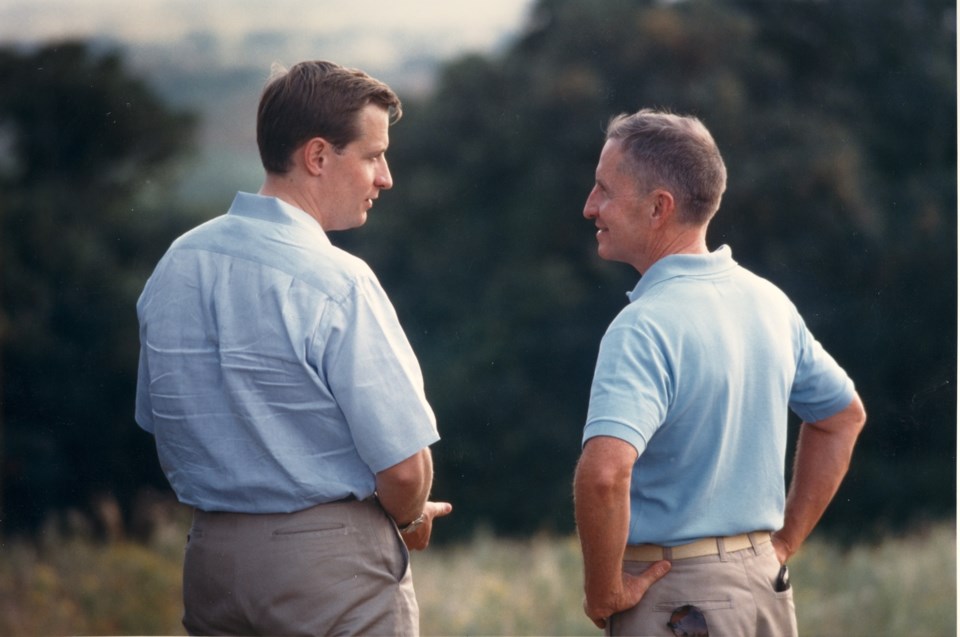
Building it Better
Perot Sr. got his start in sales in the 1930s, selling Christmas cards when he was six years old. His father, Gabriel, was a successful cotton broker in Texarkana whose business slogan was “Sell it. You can’t eat it.” It was a slogan the young Ross Perot took to heart and later hung in his office when he became a successful businessman like his father.
Born on June 27, 1930, in Texarkana, Ross Perot claimed he came out of his mother on the hottest day ever recorded in East Texas. He was the third child of Gabriel and Lulu Mary Ray, a school teacher, and was named Henry Ray after his mother’s father. At 12 years old, he changed his middle name to Ross in honor of his father and his older brother, Gabriel Ross Jr., who died as a toddler.
After his stint selling Christmas cards, Ross Perot began throwing newspapers on bicycle and horseback for the Texarkana Gazette. He also sold bridles and saddles. He was only eight years old. Later in his career, he would tell reporters that throwing newspapers shaped his entrepreneurial ways.
His mother had instilled in him strong Christian ethics, which she showcased during the Depression by opening her home to complete strangers. His father taught him how to break horses, which takes some negotiating, and would serve him well in business. Ross Perot charged a dollar to break horses. “I was small, but at seven I was a good rider,” he would later recall. “That experience is why my nose is so jagged. I was always getting knocked out.”
He attended Texarkana Junior College, now called Texarkana College, for a couple of years after high school and entered the U.S. Naval Academy in 1949. He was sworn in on his 19th birthday and received several pairs of shoes and a dozen underwear as birthday gifts. In his memoir, he called it his first example of government waste.
At the U.S. Naval Academy in Annapolis, Maryland, Ross Perot helped established its honor system in 1953 when he was class president. The honor concept system allows a midshipman to deal with an honor violation without having to report it formally.
“Midshipmen are persons of integrity: they stand for that which is right.
They tell the truth and ensure the truth is known. They do not lie.
They embrace fairness in all actions. They ensure that work submitted as our own is our own, and that assistance received from any source is authorized and properly documented. They do not cheat.
They respect the property of others and ensure that others are able to benefit from the use of their own property. They do not steal.” – Honor Concept, USNA Brigade Honor Program.
A few years later, Ross Perot was a midshipman when he met his wife, Margot Birmingham, on a blind date. Birmingham was a Greensburg, Pennsylvania native and a student at Goucher College in Baltimore. They married in 1956, and would eventually have five children together.
Shortly after they married, Ross Perot left the Navy and moved his family to Dallas. He went to work as a salesman for IBM in Dallas and started attending Sunday services with his family at Highland Park Presbyterian Church.
Ross Perot couldn’t build a computer, but he understood its long-term impacts on business and knew how to negotiate deals. He showed up to work earlier, stayed later, and worked harder than his coworkers. “My Harvard Business School education was learned in my father’s cotton office,” he recalled in the 1992 Presidential race.
He became the most talked-about worker in the office. “He was quickly known for his imaginative solutions to complicated problems,” recalled his former coworker Robert Fulghum in Ross Perot: The Man Behind the Myth. “I remember these things because he was held up to me as a model—a man to watch and emulate.”
Innovation would drive Ross Perot away from IBM in the early ’60s. He knew there was money to be made selling a computer to a customer and leasing spare time to other companies unable to afford their own computer. In essence, he wanted to create a software division, but his boss at IBM claimed it was inappropriate, according to Gene N. Landrum’s Entrepreneurial Genius: The Power of Passion.
Frustrated by his boss’ lack of foresight, Ross Perot drew up nascent plans for EDS, a data processing systems and services company, on the back of a pledge envelope at church and started it in his living room. He borrowed $1,000 from his wife and operated the company as a one-man operation. He lost more deals than he landed before he finally acquired a lucrative deal in 1965 to process claims for two new government programs: Medicaid and Medicare.
Home Depot co-founder Ken Langone was working with a legal team from Wall Street in the early ’60s and helped Perot set up EDS. “When he founded EDS, he created what is now called the Cloud,” Langone recalled at Perot’s funeral in July.
Three years later, Perot sat at the dinner table with his wife and children and told them that he planned to take EDS public the next morning and that reporters would be writing about the money they were going to have. “But remember, none of this is important,” he said. “The only that is important is our family and how we take care of and respect our family.”
Perot became a multi-millionaire and one of the wealthiest men in the U.S. Fortune magazine called him the “fastest, richest Texan ever.”
“If I’d stay at IBM, I’d be somewhere in middle-management getting in trouble and being asked to take early retirement,” Perot said in an April 12, 1987 Washington Post Magazine report.
But it wasn’t his visionary capabilities alone that made him successful. It was his insistence on recruiting top-level talent, according to Morton Myerson, the former president of EDS. He sought people who were self-starters with “can-do” attitudes and used slogans such as “Eagles don’t flock.” He also took care of his employees, offering them and their spouses profit-sharing options.
“In the same way that Special Forces are generally considered to be elite, EDS saw itself as the Special Forces of the technology world,” Myerson told Fox 4 News shortly after Perot’s death.
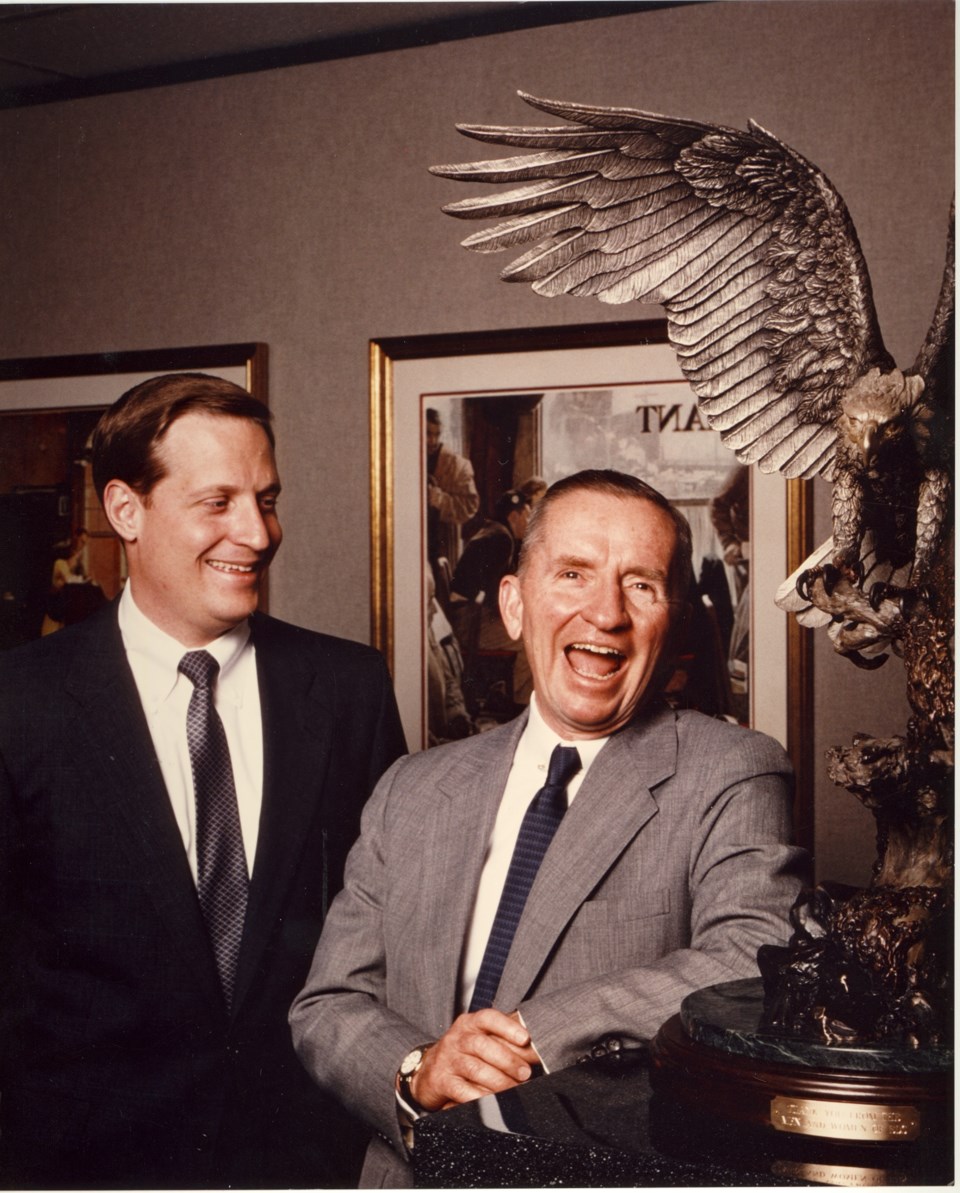
Ross Perot - Showing Promise
Fifteen years later, Perot was horseback riding on the 2,700 acres on the outskirts of Plano, telling Luce about his vision for a corporate office park with high-rise offices, hotels, retail, and dense residential. The regional office space and corporate campus zoning would allow corporations and businesses to expand as they grew.
They worked with the city of Plano to develop three zoning categories that would attract both residential and retail businesses. They planned to bury the utilities and encase the electrical lines in concrete. And though he was bringing major changes to the area, Perot had promised to protect one section of the land: Baccus Cemetery, one of the oldest cemeteries in North Texas.
Perot made a promise to the farmer who used to own the land that he would care for it, Luce recalled. The farmer had family buried there. Luce called it one of the most well-kept graveyards in the Lone Star state. Today, it’s surrounded by development and has become somewhat of a tourist attraction. It’s the site of the earliest marked grave in Plano.
Always one to keep his promises, Perot became an overnight sensation when he made national headlines for keeping his promise to two EDS employees, Bill Gaylord and Paul Chiapparone, who were imprisoned in Iran in the late ’70s. When he realized the federal government was moving slowly to help them, Perot hired a retired U.S. Army Special Forces officer, Col. Arthur “Bull” Simons, to lead other EDS employees on a raid of the Tehran prison where they were being held. Perot went disguised as an NBC reporter. It didn’t go quite as planned. The prison was too heavily guarded for a commando-type raid. Perot returned to the states and tried other avenues that included bribery to free them. But it was a prison riot that led to Gaylord and Chiapparone’s escape.
Keeping his promises to employees is part of the reason why Perot envisioned a corporate business park in the middle of farmland in Collin County. Perot called it “Legacy,” in part, due to its Shawnee Trail roots. When it opened in the mid ’80s, EDS moved into a complex with four data centers, a computer management center, three office buildings, and a headquarters. Perot said it was similar to the Forest Lane location but capable of accommodating future technology and offered a closer commute for his employees in an area known for its good schools and Texas family values.
Thirty-five years later, Legacy business park encompasses more than 15 million square feet of office space and 827,000 square feet of retail space. More than 50,000 people work, live, and play there. It’s become known as a corporate CEO’s dream.
“What is most important about Legacy is its positive impact on North Texas,” Perot wrote in a January 2010 D Magazine article. “It was, to a large extent, the economic engine for the North Dallas area.”
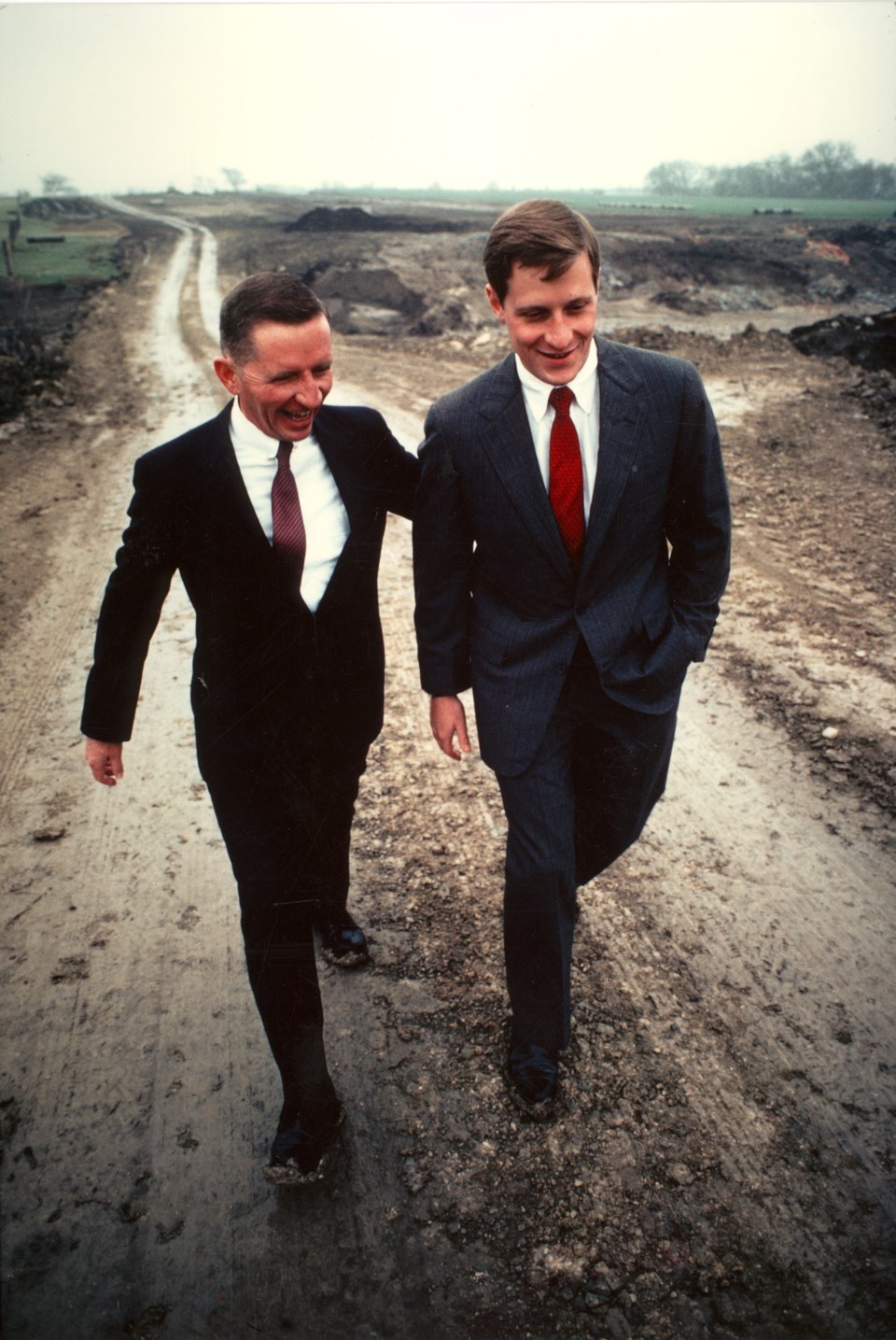
Ross Perot - The Engine
In 1988, Perot Sr. stood in a Tarrant County pasture, admiring his son’s vision of an industrial airport and business park that would attract employers such as Amazon, Facebook, and Charles Swaab. Like his father’s vision for Legacy, Ross Jr. envisioned it would become a haven for manufacturers and spur job growth. Earlier that year, the Federal Aviation Administration had approached them about developing a small airfield. It was the first time FAA partnered with a private developer to build one and would serve as a model for other private developers who planned to build airports near major cities.
The Tarrant County pasture was the perfect place to build it. Located near Interstate 35W and the Santa Fe rail that leads to Kansas City, Mo. and Houston, the Alliance International Center was distinguishing itself from other transportation hubs of the past, the New York Times reported in July 1989. The Perots planned to transform thousands of acres of raw land into an airport and industrial park with public approval. FAA officials believed they had the grit and patience to do it right. Perot told those gathered for the groundbreaking ceremony in the Tarrant County pasture that the great cities of the past had been built near seaports but those aspiring to future greatness would build near airports.
Three years had passed since Perot had sold EDS to GM for $2.5 billion. He’d recently founded Perot Systems, Inc., another multi-billion dollar data systems company, and his son, Ross Jr., followed in his footsteps with Hillwood, a multi-million dollar real estate development firm. Ross Jr. sharpened his land acquisition skills by scouting land deals with his father in the 1970s. He graduated from Vanderbilt University and became a helicopter fighter pilot in the U.S. Air Force. At 23, he completed the first round-the-world helicopter flight. By the age of 30, he was directing his family’s diverse North Texas landholdings. Like his father, he was someone with a “can-do” attitude and a knack for recognizing solutions to problems business leaders often didn’t realize they were experiencing.
Ross Jr. knew air freight was getting cheaper each year but also realized that the American industry was slow to catch on. He was using Alliance International Center to educate them. “Trying to educate our customers that they have the capability to fly product around the world as cheaply as using other transportation modes will take longer,” he told Times in 1988.
Perot Sr. wasn’t simply cheering on the sidelines, of course. He’d poured himself into his son’s vision. He invested money from the $2.5 billion EDS sale with GM to buy the land. Local landowners claimed the Perots dropped $50 million for 4,200 acres of Tarrant County pasture. Perot told the Times that all players involved committed $250 million to his son’s project. The Perots also planned to develop 6,000 acres between Alliance and Fort Worth for single-family homes and small businesses, no doubt to accommodate the talent that would be moving into the area. Fort Worth officials expected Alliance to bring 25,000 to 40,000 jobs to the area in the next 20 years. The Perots were forecasted to earn more than $1 billion if all of their Alliance property sold over the same time period.
Today, Alliance Airport is surrounded by AllianceTexas, a 9,600-acre master-planned community by Hillwood. The area has become one of the nation’s premier business parks. Callaway Golf recently announced it was opening a large distribution center at Alliance Center North 3 next to the Walmart distribution center.
Of course, master-planned communities aren’t just confined to the Alliance area. They appear all along State Highway 114 from Interstate 35W to U.S. 287 in Wise County like patches of expensive wild sunflowers. Rolling V Ranch is the most recent patch to appear. It’s dropping 10,000 homes in the $300,000 range on the outskirts of Rhome, a small rural community of 1,700 people. Situated along State Highway 114 and U.S. 287, it’s just a few miles north of Northstar, a 2,200 home master-planned community on 750 acres of farmland.
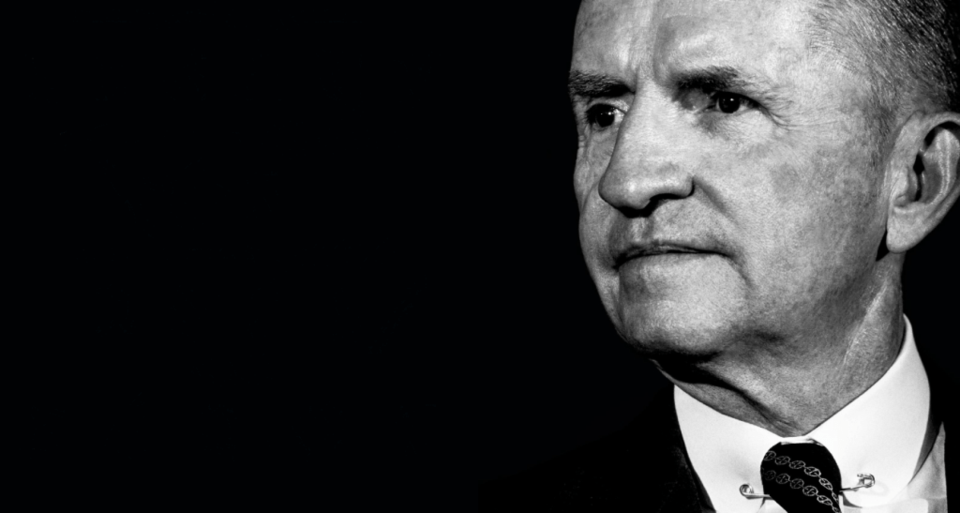
Ross Perot - A Good Ride
The work ethic Perot learned breaking horses as a child followed him to his deathbed. At 89, he was sick with leukemia yet still going to the office every morning. He was determined not to get bucked off into the grave until he was ready.
It had been a good ride over the years. Besides earning billions in business, he threw his hat in the political arena, first for Texas as the chair of the War on Drugs Committee in the late ’70s, then as the chair of the Governor’s Select Committee on Public Education (SCOPE) in the early ’80s. Perot introduced reforms that upset Texas football fans when he diverted resources from extracurricular activities to academics. He replied, “Do you want adult entertainment, or do you want kids to learn?”
Perot ran for president in the ’90s and spent millions on a campaign that eventually, he ended to protect his daughter Carolyn. It was referred to as “one of the most impressive grassroots in modern American politics.”
His supporters loved him because he was a successful businessman known for his confrontational style and signed his name on the ballot even though he had dropped out of the race. His adversaries saw him as a ticking bomb, a loose cannon, and a control freak. When he sought the presidency again in 1996, the public feared he may have been an autocratic instead of democratic, and weren’t ready for his “Shake up Washington” campaign. Some claim he was the precursor to the 2016 Trump campaign. But he never announced his support of Trump.
Like his son, Perot enjoyed speed. He was known to race across the water at Lake Texoma in Blue Thunder, a Cigarette boat with jet engines. Sometimes he’d race against his son who flew overhead in a helicopter.
His son had inherited his visionary capabilities and knack for sales. His company Hillwood specializes in complex development projects requiring collaboration with public-private parties, which describes most master-planned communities appearing in extraterritorial jurisdictions in North Texas. It recently partnered with The Rudman Partnership and VanTrust Real Estate, LLC to develop the $1.8 billion Frisco Station, the first master-planned community of its kind in North Texas that will address the total wellbeing of all who live and work there. Located next door to the Dallas Cowboys’ headquarters in the heart of Frisco, the 242-acre urban development offers fitness amenities, medical facilities, and wellness programs.
In June, the Perot family’s Hillwood signed on as a business partner with Uber to develop and test its urban air taxi service and build skyports for air taxis. The first one is being built at Frisco Station. It’s part of Hillwood’s plan to turn AllianceTexas into a test bed for futuristic transportation. It’s already home to Fidelity Investments, J.C. Penney, BNSF Railway, FedEx, UPS, and Facebook data center. Amazon Air is currently constructing a new regional hub.
Perot quit going to the office two weeks before his death and began succumbing to his five-month battle with leukemia, Luce recalled.
About 900 people attended his 90-minute funeral on July 16 at Highland Park United Methodist Church. Some of the attendees included Gov. Greg Abbott, Lt. Gov. Dan Patrick, and real estate executive and former Dallas Cowboys quarterback Roger Staubach. Speakers ranged from retired Army Brig. Gen. Pete Dawkins and Perot’s son. His wife, Margot, chose passages of scriptures for his four daughters to read.
All had gathered to remember his legacy and his willingness to act without waiting on a committee. He was called a legend who operated at “Ross speed,” a cross between Bill Gates, Leonardo da Vinci, and Rambo.
Despite all of his projects, Perot had always made it a priority to be home for dinner with his family, said James Fuller, a spokesperson for the family.
At his father’s funeral, Ross Jr. recalled their last boating trip together and remembered fondly his father insisting that he kissed his wife of 60 years before they headed into the water. “My father will be missed,” he said. “He will never be forgotten. Buddies to the end.”
This article originally appeared in Local Profile’s February 2020 issue.

